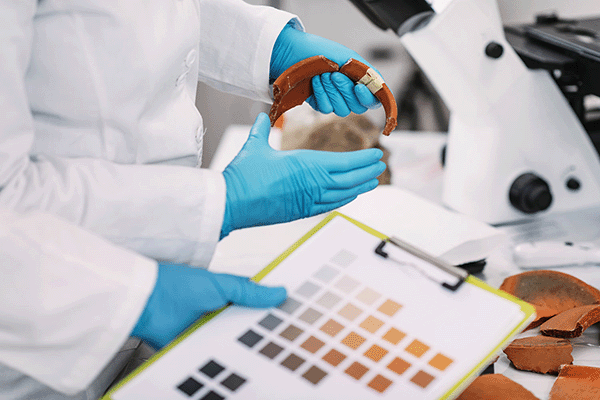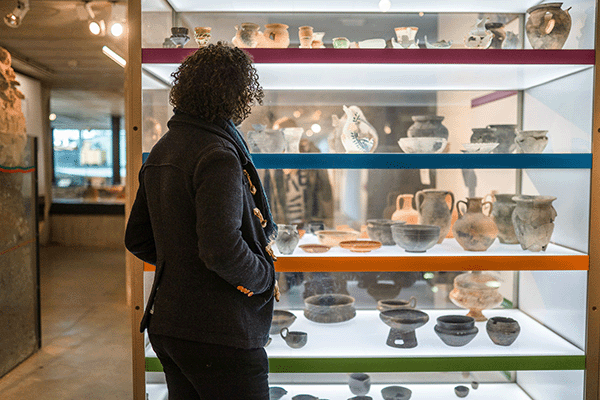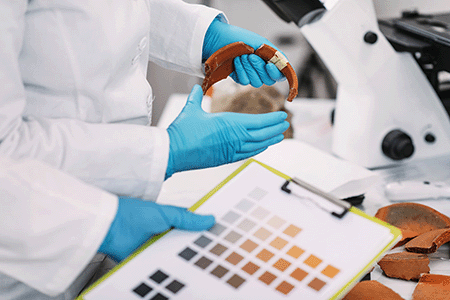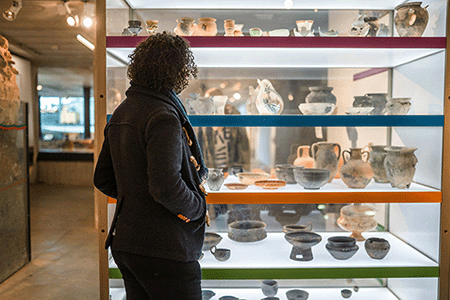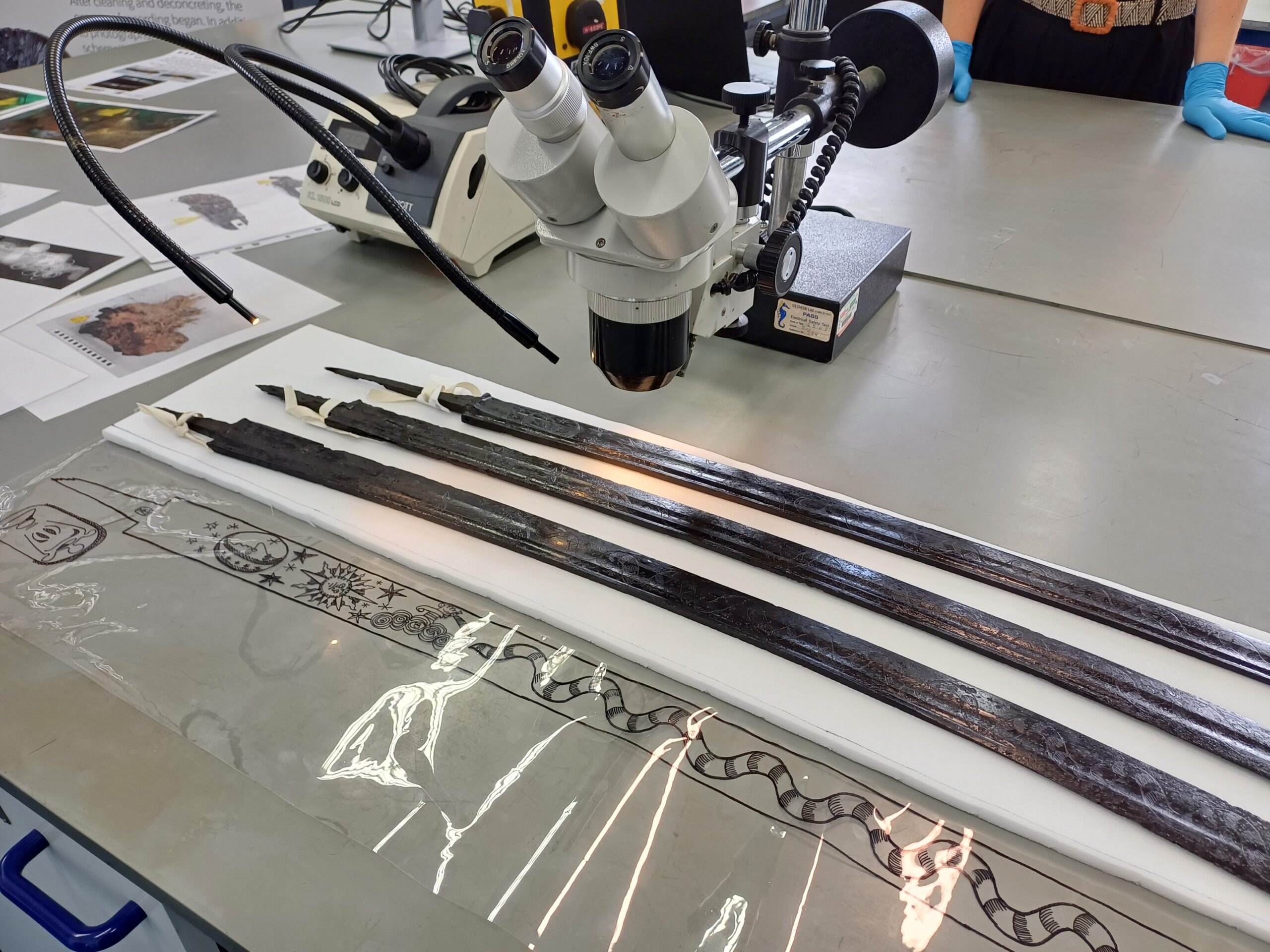The RICHeS team were delighted to attend the recent re-opening of Fort Cumberland Laboratories in Portsmouth following a major refurbishment. This celebration marked a significant milestone for Historic England, providing a valuable opportunity to meet the team behind the Heritage Science Collections Hub: South HSCH:S, a RICHeS-funded project led by Gill Campbell, Head of Fort Cumberland Laboratories.
The HSCH:S project aims to upgrade collections stores and curatorial facilities, establishing Fort Cumberland as a national centre of excellence for interdisciplinary research, specialist training and public engagement in heritage science.
A unique site with a longstanding legacy
Fort Cumberland is an 18th-century pentagonal bastion fort and scheduled monument and is home to Historic England’s science laboratories. These include specialist facilities in Environmental Archaeology, Human Skeletal Remains, Material Science and Investigative Conservation, supported by extensive reference collections and state-of-the-art imaging and analytical equipment.
With a legacy stretching back over 75 years, Fort Cumberland has played a pivotal role in investigating and preserving England’s heritage. The reopening celebration offered insights into the groundbreaking work being undertaken here, such as advising on and developing a research framework for one of Britain’s largest post-medieval burial sites, as part of the HS2 archaeological programme.
RICHeS is delighted to support the newly enhanced Fort Cumberland Laboratories and the expanded possibilities they bring for impactful, interdisciplinary research.
Exploring collections and facilities
As part of the visit, the RICHeS team were taken on a guided tour of the upgraded facilities and collections. Highlights included artefacts from the Dutch East India Company shipwreck Rooswijk, which sank in 1740. Among them were 18th-century sabre blades, which have just completed their conservation journey. These items, and the research surrounding them, were featured in a Historic England blog.
The tour also included the skeletal preparation laboratory, where significant enhancements are underway. This facility processes zoological specimens, so that they can be used in zooarchaeological research that helps us understand past environments, economies and diets. All specimens are ethically sourced from wildlife trusts, veterinary practices and farms, and are accompanied by detailed life histories, ensuring high standards of both research value and ethical practice. Planned upgrades will modernise processes such as degreasing, improve safety and containment, and expand training capacity.
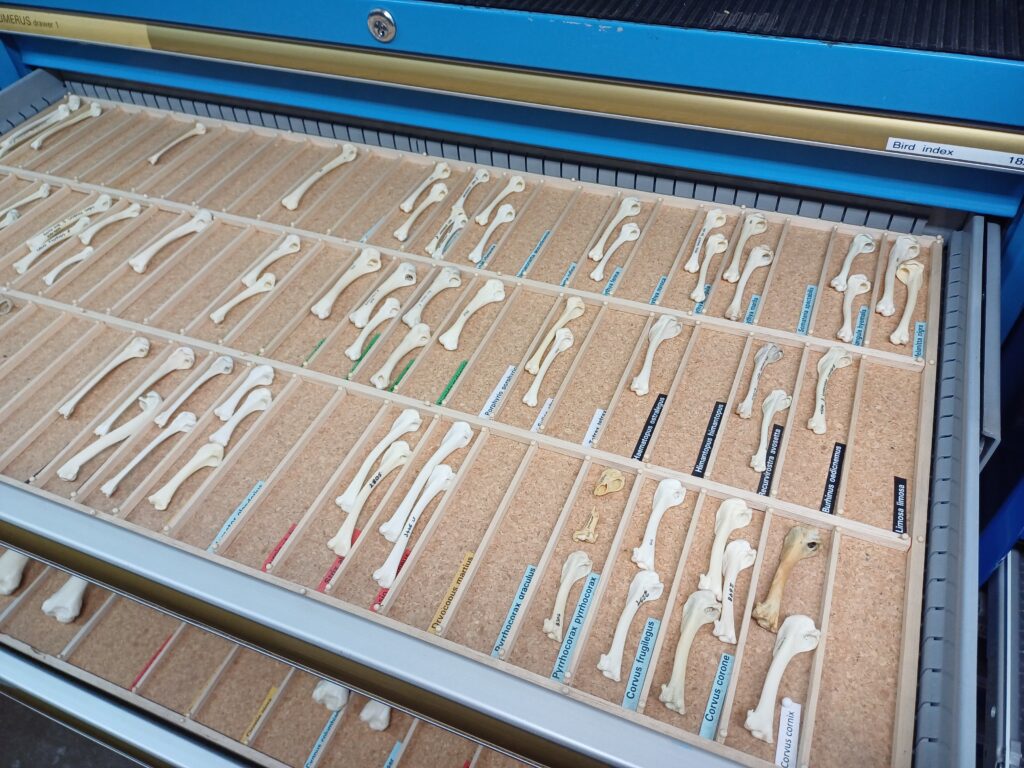
Bird index collection housed in the new Zooarchaeology Special Collection Store
Connecting collections across the UK
As one of the key nodes within the RICHeS distributed infrastructure, Historic England’s Heritage Science Collections Hub: South (HSCH:S) at Fort Cumberland is partnered with the Ark of the North at the University of Aberdeen, and SHEFF BIOARCH at the University of Sheffield to form a UK-wide network of connected heritage science collections.
Together, these hubs are making heritage science equipment, collections and expertise more findable, accessible and shareable across the country. This collaborative model exemplifies the core aims of the RICHeS programme and we look forward to seeing how these partnerships evolve and strengthen.
Gill Campbell shares:
“We are delighted to be one of three interconnected heritage collections hubs that will together realise the RICHeS vision of widening access to collections, making them available for researchers and students to use and learn from wherever they are based. By working with Portsmouth Museums we can realise the potential of the collections that both organisations hold to tell stories about the past that are meaningful and to everyone and relevant the global challenges we face”

